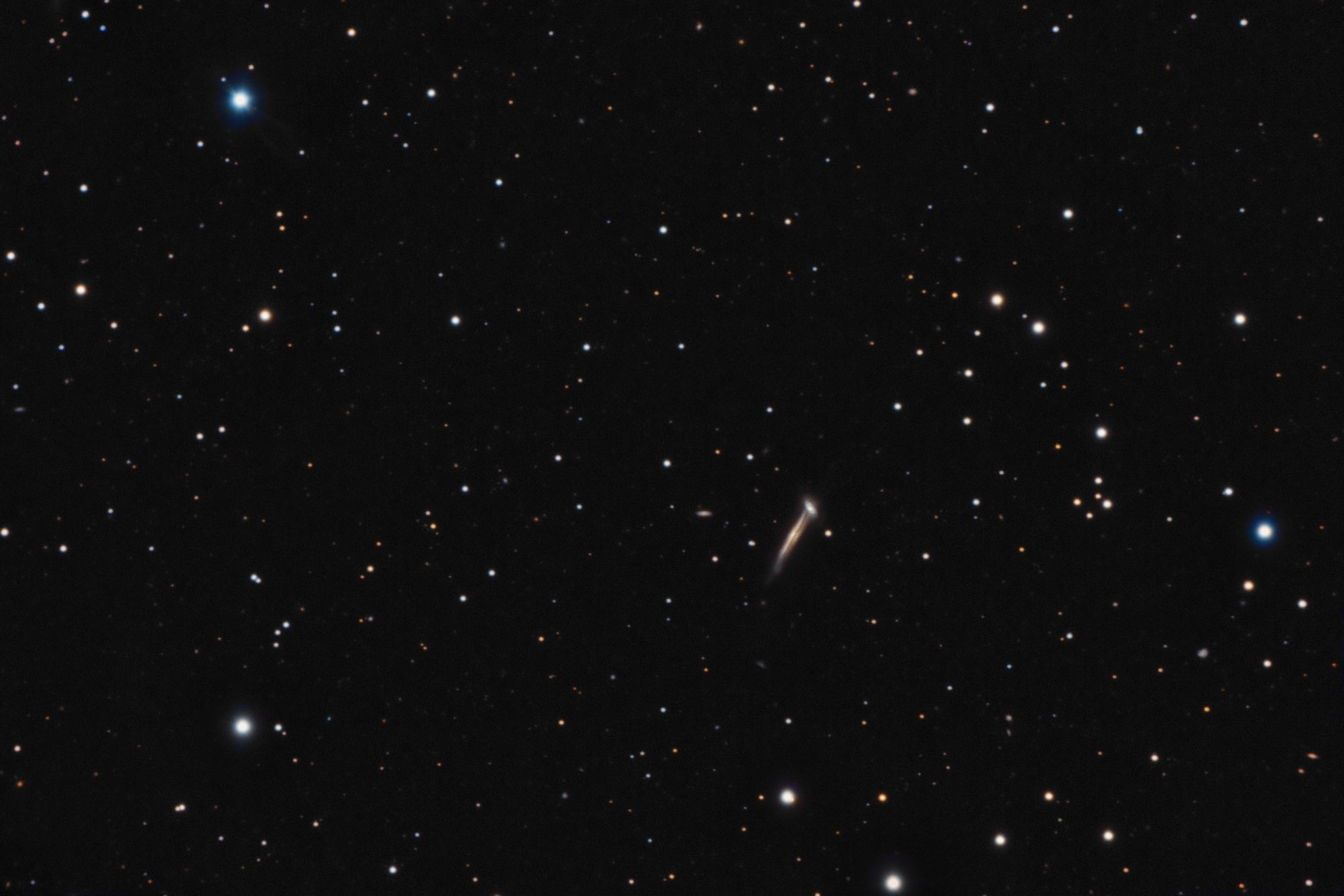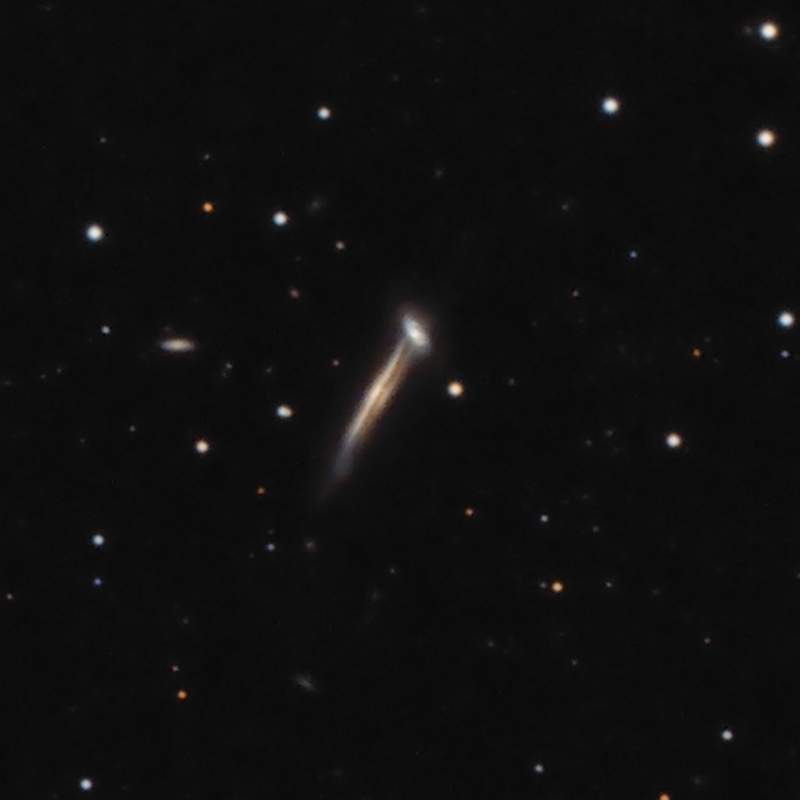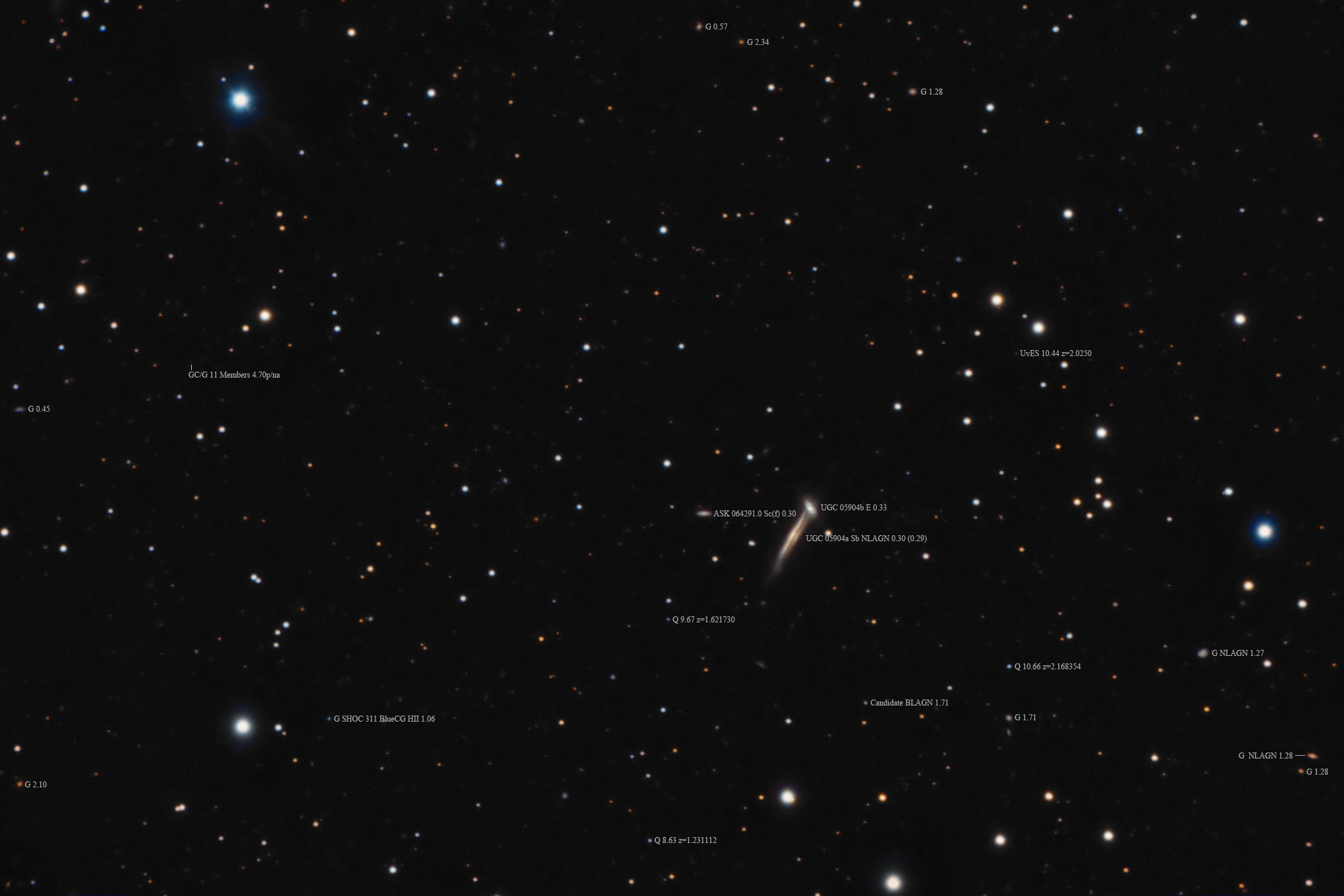| Description | Images |
Object name: UGC05904Designation(s): UGC05904, UGC 05904 is a pair of likely interacting galaxies in Ursa Major about 300 million light-years distant. The southern member, UGC 5904a, an Sb galaxy with a narrow line active galaxy nucleus is also known as 2MFGC 08412 so makes the less demanding 2 micron flat galaxy catalog but isn't flat enough for the FGC itself. It's companion, UGC 05904b is listed as an elliptical galaxy. It seems to have a well-defined core with a rather blue disk and apparent dust lanes that seem to define a vague spiral pattern. While it's redshift would seem to put it more distant than UGC 05904a by some 3 million light-years this is likely just due to their relative velocities rather than being a real distance difference. Which galaxy is in front? If it is the edge on spiral it could be the dust lanes in the elliptical are due to the dust lane in the spiral seen against the more distant elliptical. Still, it looks to me that the elliptical is in front. Spectral data should answer this question but I found none in the literature. The disk of the spiral is warped with the northwest end bending up and the southeast end warped down. Though much of this downward warp is due to a plume-like blob of stars with the actual disk extending pretty much on plane beyond it. But even that does warp down some. The northwest end can be seen beyond the elliptical and appears rather like a blob rather than a well-defined end of the edge on disk you'd expect to see. Related Designation(s):2MASS J10483779+6621428, 2MASX J10483781+6621433, 2MFGC 08412, CGCG 1045.2+6637 NED02, CGCG 313-034 NED02, IRAS 10453+6637, IRAS F10452+6637, KPG 248B, LQAC 162+066 002, MCG +11-13-038a, NSA 012817, PGC 032321, SDSS J104837.92+662143.2, SDSS J104837.92+662143.3, SDSS J104837.93+662143.1, SDSS J104837.93+662143.2, SDSS J104837.93+662143.4, SDSS J104837.94+662143.5, UGC 05904, UGC05904, UNAM-KIAS 0558, UZC J104838.1+662142, [RC2] A1045+66, [TTL2012] 374499, [VCV2006] J104838.0+662143, |


